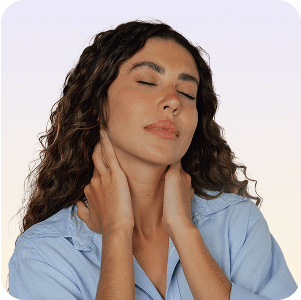Illustrated by Erin Rommel
Although we’ve only been around since 2018, Daye was truly born the day I started my period, at 9 years old.
Growing up, no one had ever sat me down to explain what the menstrual cycle was, so when I started bleeding I thought I had a rare and shameful disease. I hid my period for over a year, convinced of my imminent death.
One day I finally mustered the courage to tell my father there was something wrong, and between my inability to explain what I was going through, and him being a 50 year old man, we went to the emergency room.
When I told the nurse about my shameful disease, she found the whole ordeal hilarious and exclaimed: “It’s just your period!”. Which was great, except I didn’t know what a period was!
It wasn’t until four, five years later that my girlfriends at school started their periods too. By that time, I was the expert on periods—I knew everything about pads and tampons, and how to hide a hot water bottle in your hoodie during class.

Being able to share my know-how with my classmates felt great—we made periods cool. We would proudly walk the halls with our pads out and then changed them simultaneously in the loo cubicles.
It was frustrating not having anybody to turn to for answers on my health as a woman. While having to learn about my reproductive system on my own was daunting, it’s also why I built the habit of independently seeking out and processing information on women’s health.
As I grew older, I would spend hours reading research papers on PCOS or endometriosis, sourcing as much information I could about the workings of my body.
Reading random research papers is also how I discovered industrial hemp. I read about how environmentally sustainable it is, how its fibres are more absorbent, and about the therapeutic effects of the flower extract.

I had a bit of a Eureka moment when I asked myself "if we know the same plant produces absorbent fibres and analgesic oils, why don't we make tampons from it?" It seemed like such an obvious solution to a problem that seemed so overlooked.
I spent a year subsidising early company development, including clinical validation, IP protection and product innovation, with my salary from my full time job and across 11 credit cards.
Over the summer of 2018, I met about 180 investors and was able to raise the first pre-seed round for the business in autumn the same year.
From there, I started building the team, looking for the most talented and dedicated people to join me on the complex journey of building a startup from scratch.

Now we’re focusing on raising the standards in female health products and services.
I’m particularly excited about normalising the conversation on female reproductive health across genders, backgrounds and economic status.
Everyone deserves safe and effective period care, designed with our bodies, lifestyles and needs in mind. I can’t wait for more people to be able to try and use Daye products.






